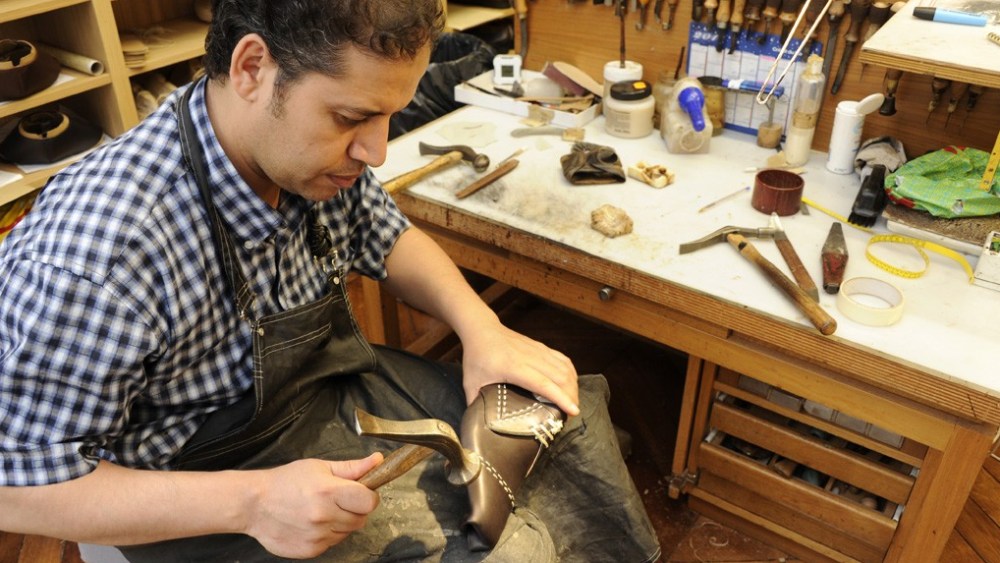PARIS — Famous worldwide for its luxury goods, France’s specialized craftsmanship sector now generates more revenues than the pharmaceutical industry, a leading professional organization said Tuesday.
The Institut pour les Savoir-Faire Français, formerly known as the Institut National des Métiers d’Art, set out to quantify the value of manual activities via a broad survey of skilled artisans such as woodworkers, stone cutters, leather goods-makers, weavers, glassblowers and more.
Spanning 234,000 companies, the category produces combined revenues of 68 billion euros, according to the study it published with market research firm Xerfi Specific. By comparison, the pharma sector generated revenues of 62 billion euros in 2022, according to French pharmaceutical lobby Leem.
“These figures profoundly change the way we view métiers d’art and exceptional knowhow,” said Luc Lesénécal, president of the Institut pour les Savoir-Faire Français.
“They confirm that these are much more than legacies of the past. They flow through our regions, create skilled jobs, transmit unique know-how, participate significantly in our economy and help our country shine worldwide,” he said.
The sector accounts for 500,000 workers in France, including 280,000 salaried employees, the report found.
The French government has officially recognized 198 métiers d’art and 83 specialties across sectors including luxury and fashion, architecture and interior design, performing arts and heritage restoration, among others.
Despite their significant contribution to the country’s output and exports, companies active in the field of crafts were held back by the lack of reliable figures to measure their real impact, Lesénécal said.
“This lack of data has hampered their recognition and development for too long. Without clear economic indicators, it is difficult to identify their needs, respond to their challenges, carry out effective actions, but also convince public and private partners of the weight they really represent,” he noted.
The Fondation Bettencourt Schueller — created in memory of L’Oréal founder Eugène Schueller — financed the survey, backed by French luxury association Comité Colbert, the Culture Ministry and the Terre & Fils endowment fund.

A display of Baccarat decanters at the “Legend of Crystal” exhibition in 2014.
Franck Mura
By casting a wider net than previous studies, the report’s estimate of sector revenues was twice as large as the previous figure of around 30 billion euros calculated by the Finance Ministry more than a decade ago, said Jérémy Robiolle, director of development at Xerfi Specific.
While exports make up 9 billion euros, or 14 percent, these are fueled mainly by large groups. Since micro-, small- and medium-sized companies represent close to 90 percent of the sector’s revenues, there is strong potential for overseas business to grow, Robiolle said.
Eight out of 10 companies in the category are based outside of Paris, with strong regional specialties such as leather goods production in the southwest of France, glassmaking in the northeast and ceramics in Provence.
Some of the report’s findings are unexpected: 55 percent of company heads are women, and close to 40 percent of employees are under 35. “Contrary to popular belief, young people are also drawn to skilled crafts, but there is still much work to be done,” cautioned Robiolle, adding that more training and visibility were needed.
Bénédicte Epinay, chief executive officer of Comité Colbert, said that while the survey did not produce detailed statistics about the luxury sector, it reinforced the need for fresh blood amid a dearth of specialized workers in some segments.
According to the report, French companies active in the craftsmanship space aims to recruit between 50,000 and 55,000 people in 2024. Luxury firms alone are seeking to fill 20,000 positions, Epinay said.
“This study is also a warning to remain very vigilant, because the broader sector is fragile in many ways,” she told WWD on the sidelines of Tuesday’s presentation.
Xavier Long, deputy director of the Institut pour les Savoir-Faire, said the study would come in useful when lobbying on behalf of the sector, whether at the national or European level, especially at a time when public finances are under pressure as France implements austerity measures to cut its budget deficit.
“This study will help business leaders in our sector realize how much they truly weigh in the French economy,” he said. “Not everyone is aware of this, or they sometimes underestimate their own importance. They can be proud of what they do.”

A leather goods worker at an Hermès factory in France.
Courtesy of Hermès

